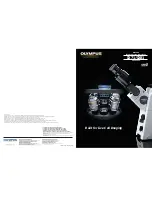Reviews:
No comments
Related manuals for DM4000B

LSM 710
Brand: Zeiss Pages: 4

Luxeo 2S
Brand: Labomed Pages: 20

Axiovert 100
Brand: Zeiss Pages: 32

314220
Brand: Saxon Pages: 8

GE5
Brand: Aigo Pages: 32

DTX 700 Mobi
Brand: Levenhuk Pages: 5

700 Series
Brand: Levenhuk Pages: 28

SMZ1500
Brand: Nikon Pages: 37

NK103-B
Brand: Saxon Pages: 8

311008
Brand: Saxon Pages: 12

G-2030M
Brand: Galileo Pages: 2

3065
Brand: Accu-Scope Pages: 5

Professor ESH101
Brand: Ken A Vision Pages: 8

IX71
Brand: Olympus Pages: 16

M2252DGL Series
Brand: Swift Pages: 12

Axiocam MR
Brand: Zeiss Pages: 89

SpectroPlate
Brand: Techkon Pages: 35

BXFM Series
Brand: Olympus Pages: 36

















